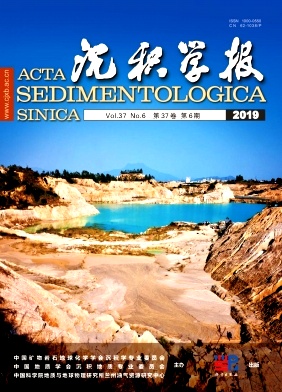Fabric Characteristics,Depositional Environment and Geological Implications of Cambrian Miaolingian Microbialites at Magou Section,North China Platform
doi: 10.14027/j.issn.1000-0550.2019.018
- Received Date: 2018-12-25
- Rev Recd Date: 2019-02-01
- Publish Date: 2019-12-10
-
Key words:
- North China Platform /
- Cambrian /
- Miaolingian /
- microbialites /
- calcified cyanobacteria
Abstract: The North China Platform began to accept deposition following the late Cambrian Series 2,overlapping the ‘Great Unconformity’ between the Precambrian and Cambrian as a complete second-order cycle of transgression and regression. The depositional sequence of thick epeiric siliceous clastic-carbonate mixtures involves a variety of microbialites(reefs) formed against this background. The Miaolingian in the study area is well represented by outcrops of the Maozhuang Formation,Xuzhuang Formation,Zhangxia Formation and Gushan Formation,constitutes four third order sequences:SQ1 to SQ4. Particular biostromes,simple biomounds and biomound complexes composed of microbialites developed in the HST and FRST of SQ2,and in the HST of SQ3. Type I maceriate microbialites formed in the low-energy environment of the subtidal zone below the normal wave base;Types II and III formed in the upper subtidal to intertidal zone. Leiolites formed in shallow water above the storm wave base. Short-columnar stromatolites formed in the intertidal zone;stromatolites with gentle wavy and blurred laminae formed in the supratidal zone;and small stromatolitic mounds formed in high-energy oolitic banks. It is generdy believed that the microbialitic reefs of the Cambrian Miaolingian are characterized by thrombolites and dendrites. The discovery of maceriate microbialites in the Miaolingian enriches our understanding of the diversity and complexity of Cambrian microbialites. Fossils or fossil assemblages of calcified cyanobacteria Girvanella,Epiphyton and Hedstroemia were found in mazelike carbonates,leiolites and stromatolites,suggesting that these microbial rocks are the products of calcified microbial mats dominated by cyanobacteria,while a large number of dispersed pyrite crystals or particles indicate that nonphotosynthetic and heterotrophic bacteria such as sulfate-reducing bacteria may play important roles in facilitating carbonate precipitation.
| Citation: | WANG Long, LI WeiQiang, WANG Hao, WU Hai, XIN Hao. Fabric Characteristics,Depositional Environment and Geological Implications of Cambrian Miaolingian Microbialites at Magou Section,North China Platform[J]. Acta Sedimentologica Sinica, 2019, 37(6): 1193-1209. doi: 10.14027/j.issn.1000-0550.2019.018 |






 DownLoad:
DownLoad: